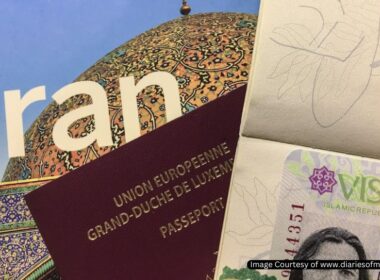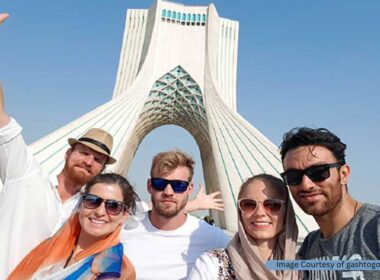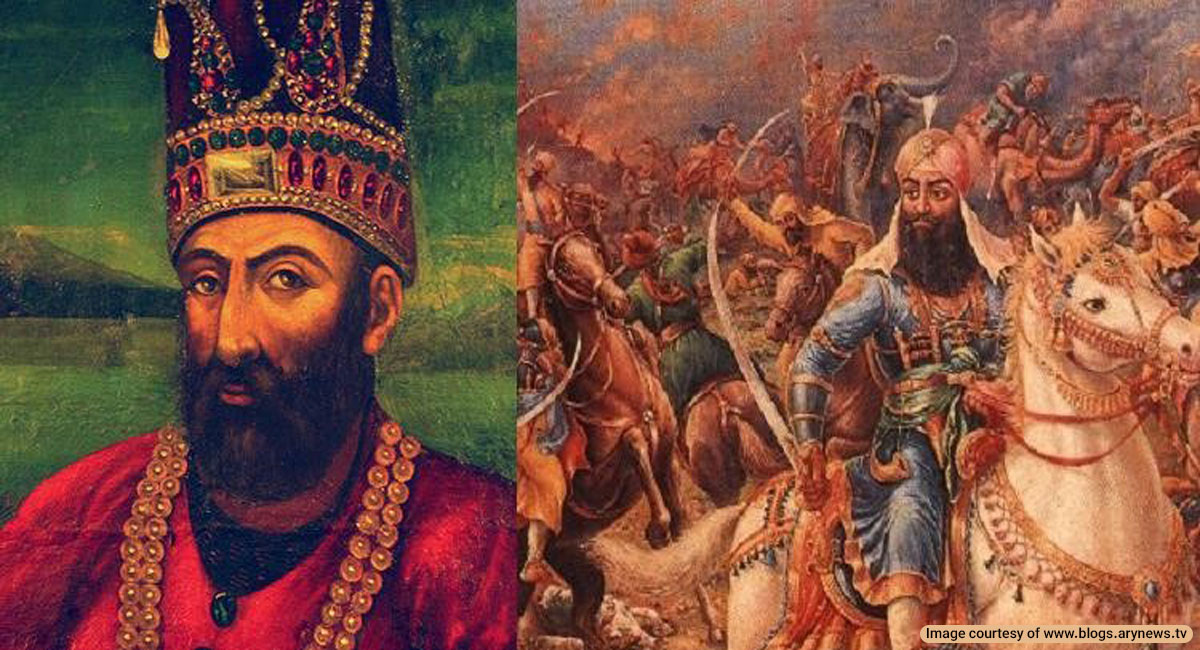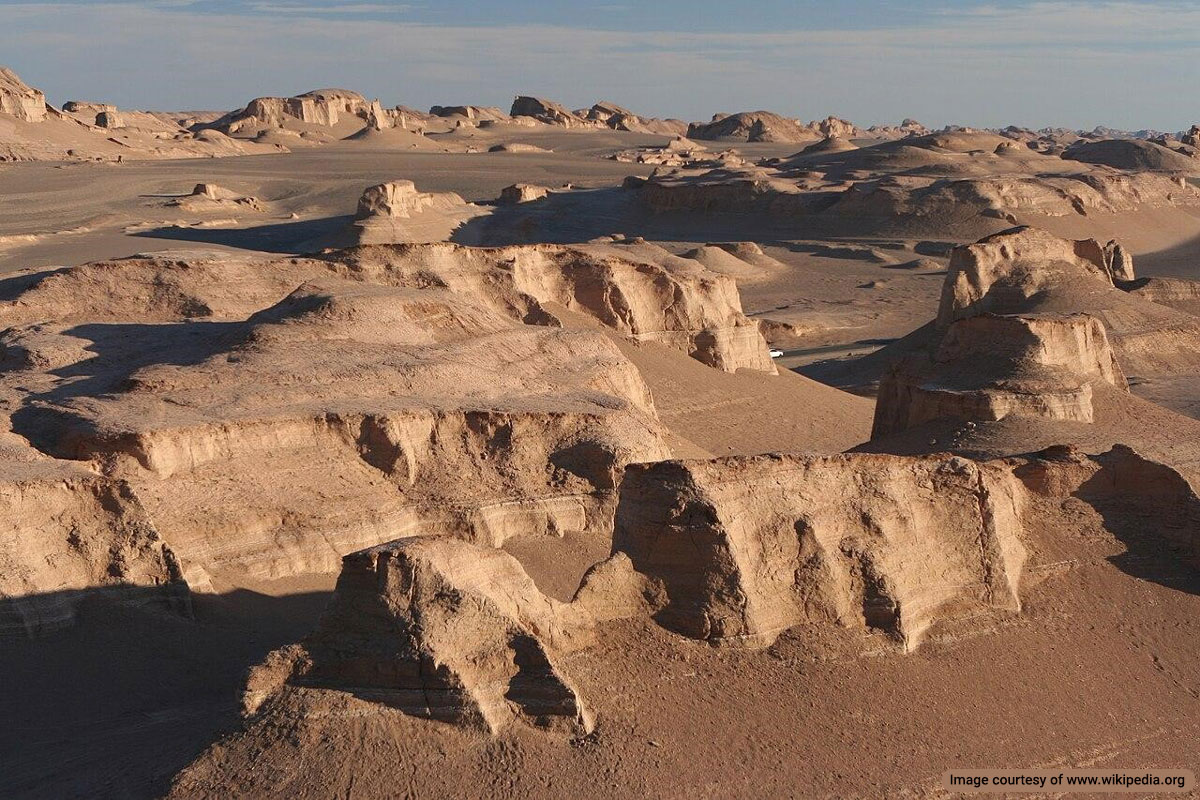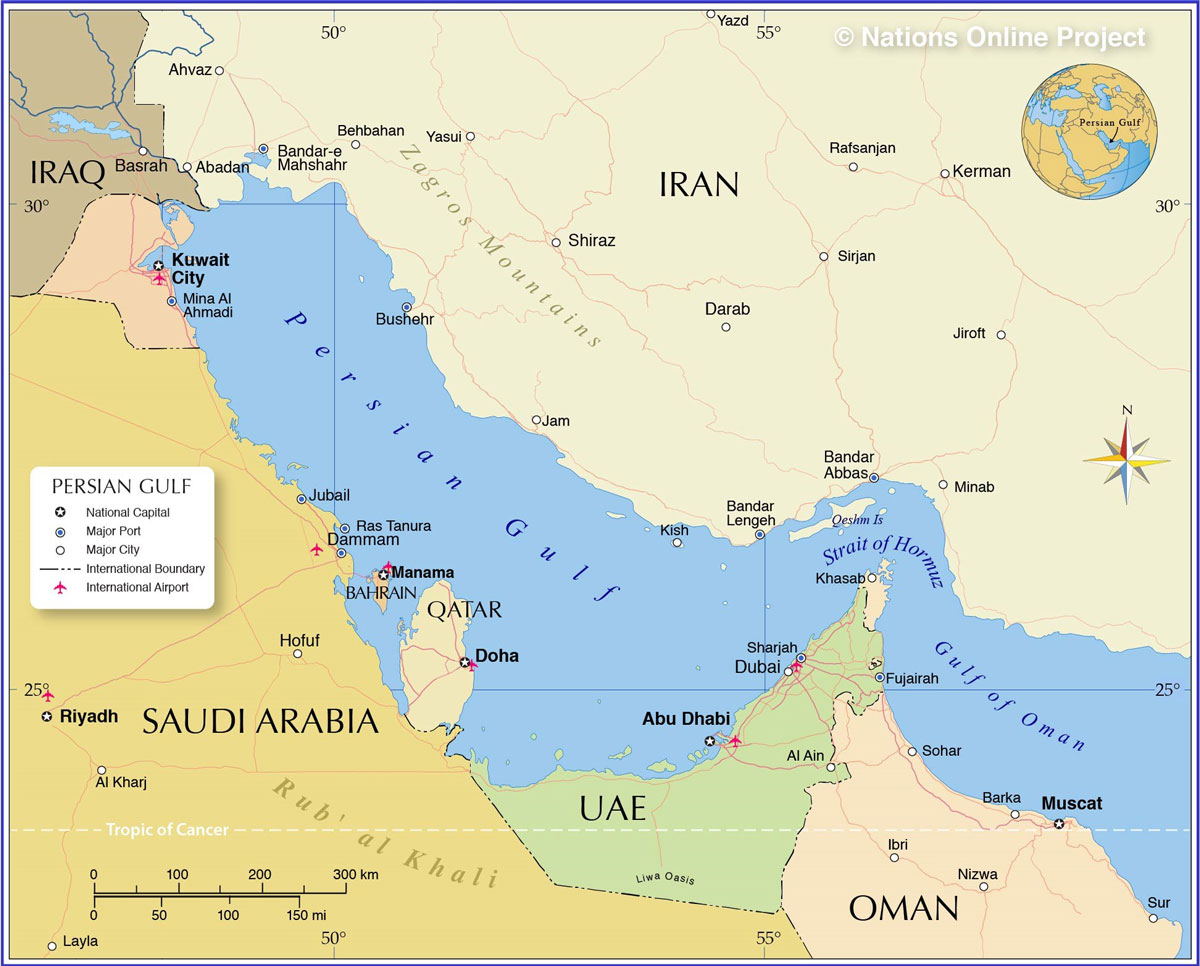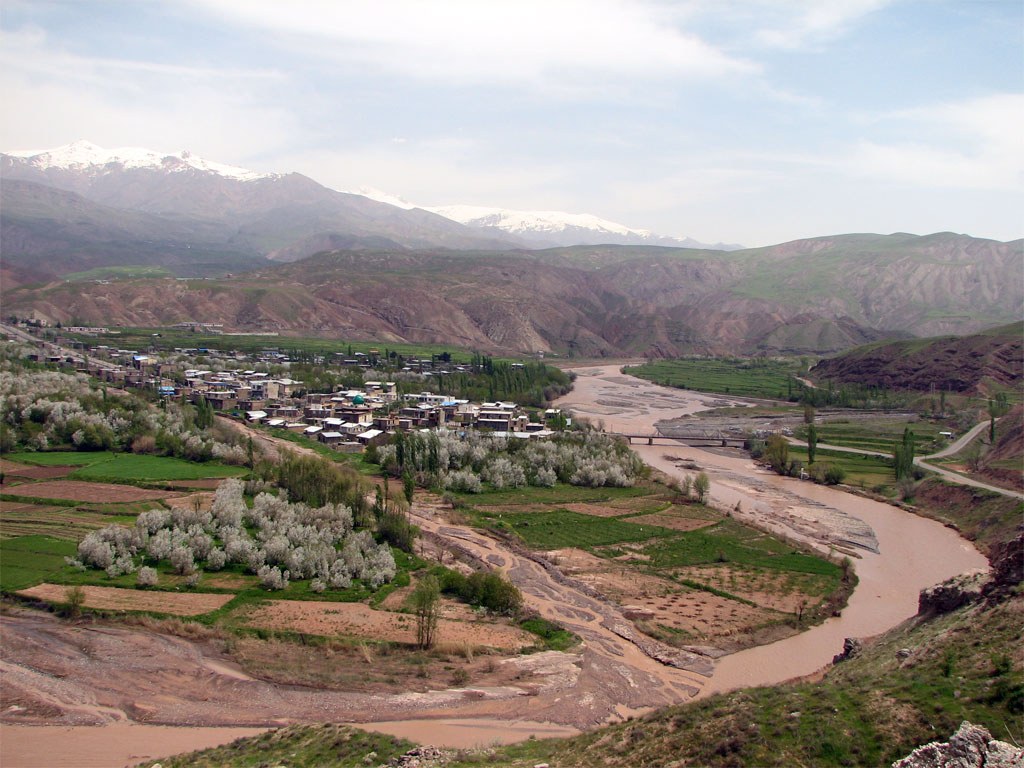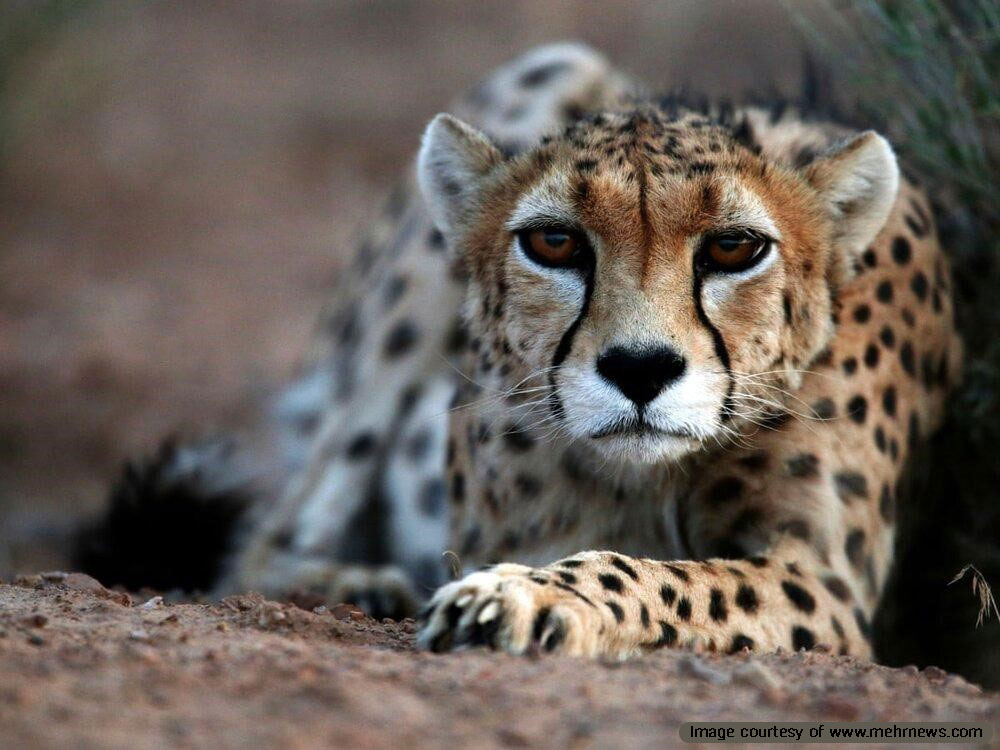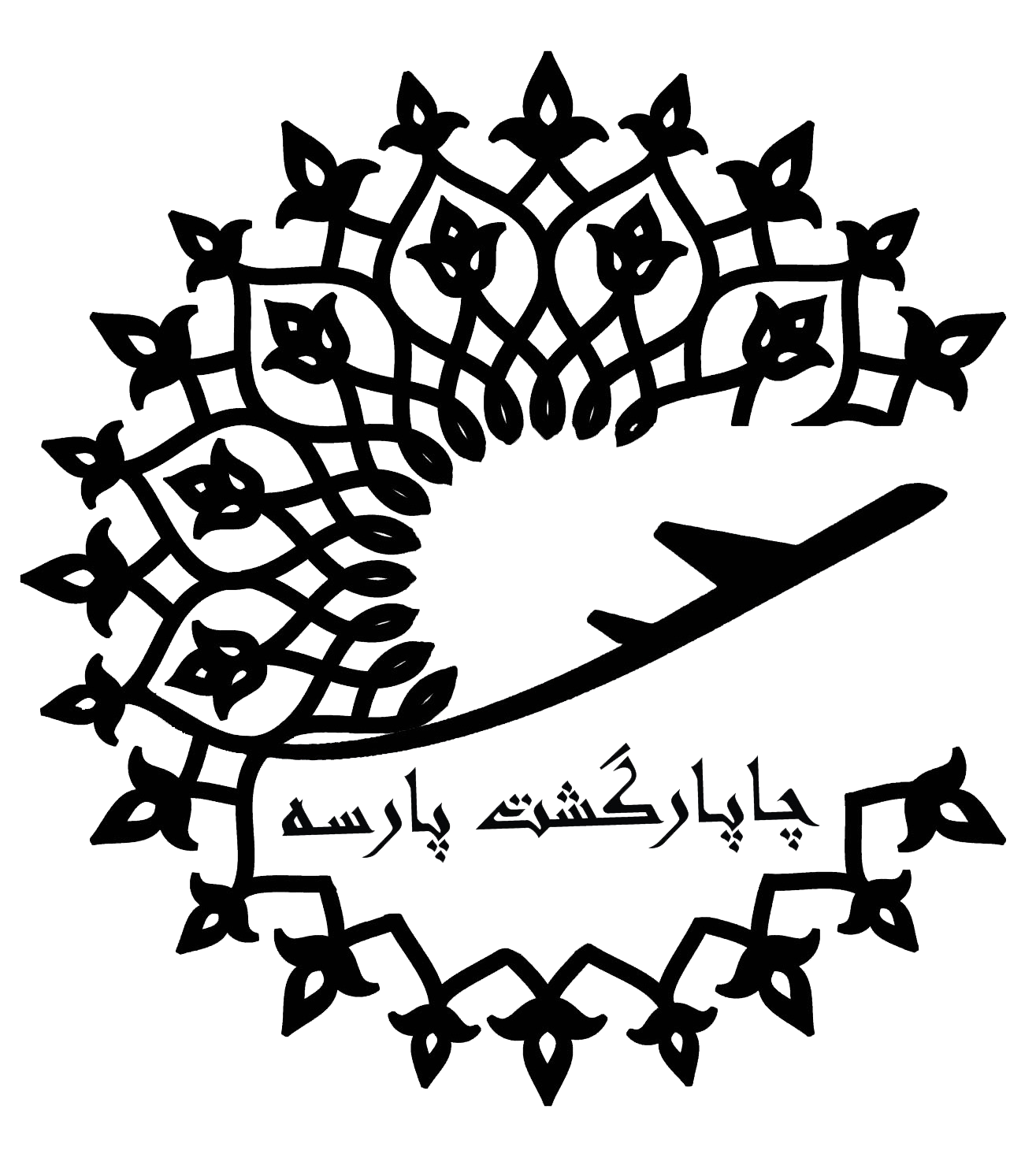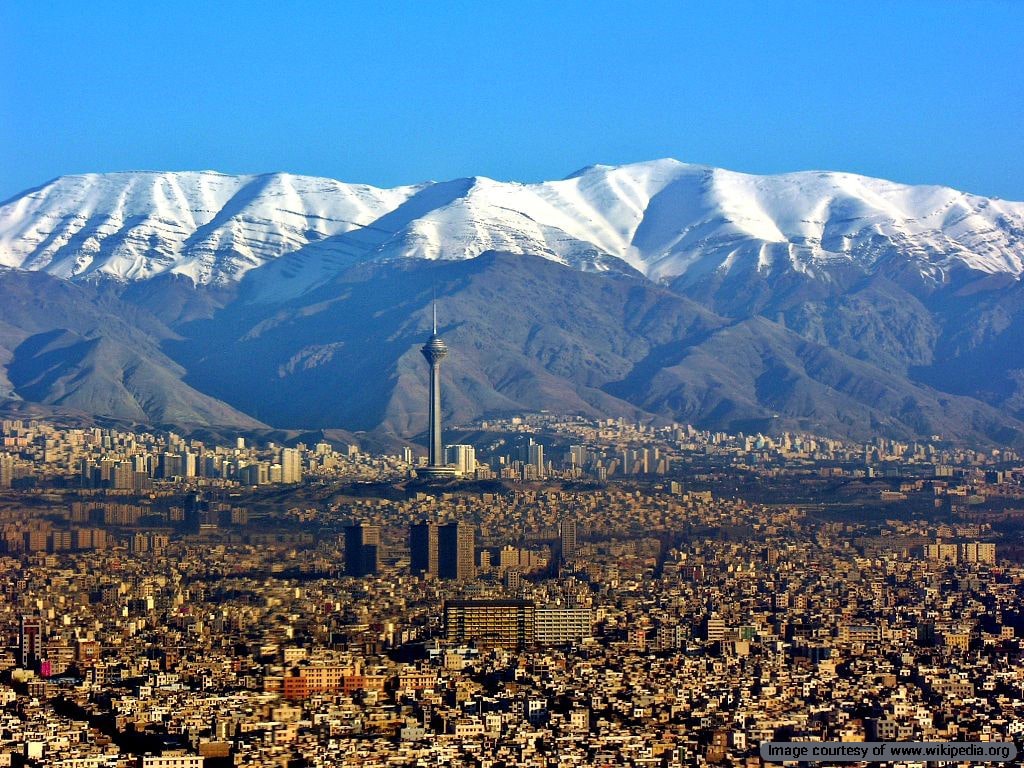
Alborz Mountains are one of the most recognized landmarks of Iran’s Geography. This mountain range is a great wall stretching from the Azerbaijan province in the northwest to Afghanistan and Turkmenistan. The mountain peaks cover the southern shores of the Caspian Sea, separating its climate from the central deserts of Iran. This geological landmark has a huge impact on the country’s climate and weather conditions. The most notable feature of this mountain range is Iran’s highest peak, Mount Damavand, which is located in Central Alborz.
What Does Alborz Mean?
The origin of the name Alborz can be traced back to the Avestan language. The Zoroastrian Avesta describes a mythical mountain called Hara Berezaiti as the world’s center. In Middle Persian, it was called Hara Berez and Harborz. The term Hara means guard, and Berezaiti means tall. Zoroastrians believed this mythical mountain was the gateway to the afterlife.
There are many legends in Iranian literature, such as Shahnameh (the Book of Kings), that take place on Mount Damavand, the highest peak in the Alborz Mountain Range. These stories attest to the historical significance of the Alborz mountains among Iranians, including the followers of Zoroastrianism and Mithraism. This significance is not limited to myths and legends. This geographical region plays an important role in Iran’s nature and environment.
Provinces Covered by the Alborz Mountains
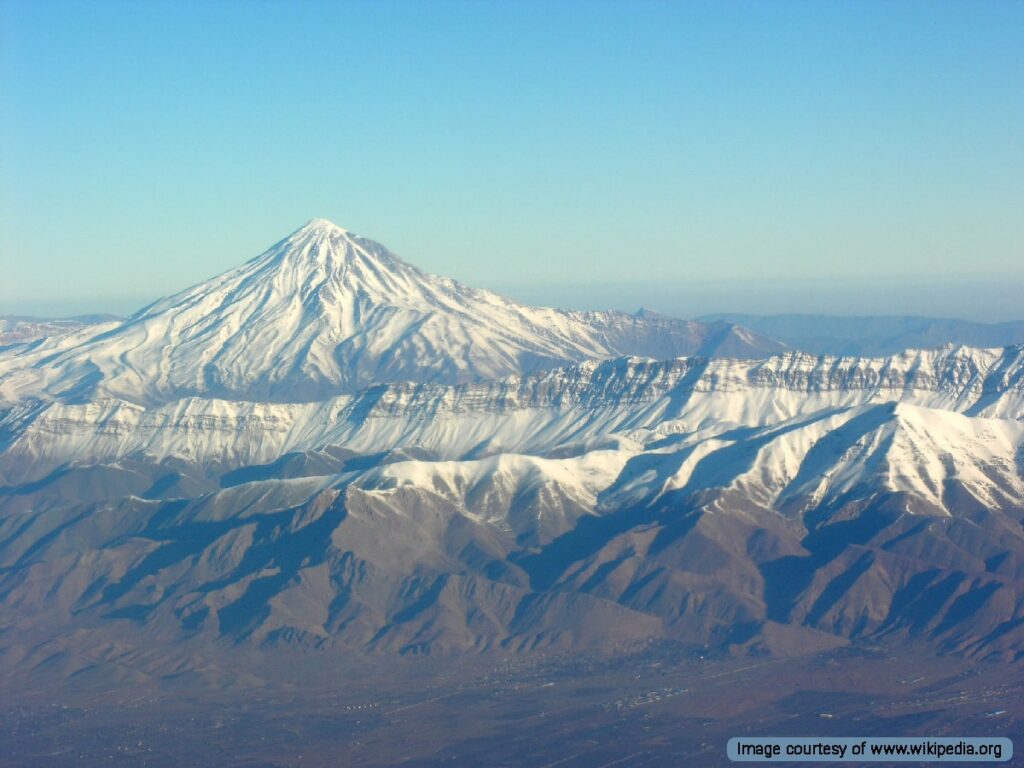
The Alborz mountain range is in the north of Iran, on the southern shores of the Caspian Sea. The high mountains prevent the sea’s humidity from reaching Central Iran and serve as a natural wall, separating the green northern Alborz from the dry lands in its south. This long mountain range covers several Iranian provinces including Mazandaran, Gilan, Gulestan, Ardabil, Zanjan, Tehran, Semnan, Qazvin, and Alborz Province. Major cities in the vicinity of the Alborz Mountains include Amol, Larijan, Damavand, Firooz Kuh, and Lar.
History of Human Settlements in the Alborz Mountains
There have been numerous archeological expeditions in the Alborz Mountain Range. Based on their findings, the earliest signs of human settlements in the Alborz mountains date back to the Lower Paleolithic era, around 200,000-250,000 years ago. The evidence for this claim was discovered in the Darband Rashi cave in Gilan province in the form of stone tools and the remains of hunted animals. In addition, traces of Neanderthals have been discovered in sites along the mountain range.
The Kiaram Cave in Gorgan, Golestan Province, and Buzeyir Cave in Delikli-Dash Mountain in the Republic of Azerbaijan are other notable Paleolithic caves in the Alborz Mountains containing Neanderthal remains. The bones of an extinct species of Rhinos were discovered in Kiaram Cave, which indicates the presence of this animal in the region around 200,000 years ago.
Traces of early Neanderthal settlements were also found in Garm Roud, where primitive humans lived and hunted in the mountainside from 200,000 years ago until the end of the Second Ice Age. This extensive history marks the importance of the Alborz mountains in the formation of civilization in Iran.
Highest Peaks of Alborz Mountain Range
The Alborz Mountain range is the highest land mass in the Iranian plateau. Below is a list of the highest mountains in this range (values in meters):
| Mount Damavand | 5,671 |
| Alam Kuh | 4,850 |
| Takht-e Suleyman | 4,659 |
| Siyah Sang | 4,609 |
| Haft Khan | 4,357 |
| Chalun | 4,516 |
| Siyah Gook (Southern) | 4,500 |
| Siah Gook (Northern) | 4,445 |
| Tochal | 3,960 |
| Somamus | 3,620 |
As mentioned earlier, Mount Damavand is the highest peak in all of the Alborz Mountains, with a height of 5,671 meters. In the past, Mount Damavand had volcanic activity, and the crater of this volcano is currently visible at a width of 400 meters. However, Damavand has no volcanic activity at present. Occasionally, sulfur gas is released from its volcanic crater, encasing Mount Damavand like a thick cloud.
Peaks such as Tochal, Alam Kuh, Shah Alborz, Do Barar, Panheye Hesaar, Sialan, and Khalno are among the famous peaks of this mountain range, with altitudes ranging between 3,000 and 5,000 meters.
The mountain peaks of Alborz located in the eastern regions have elevations less than 4,000 meters. The peaks of Central Alborz are higher in comparison to other parts of this mountain range.
Geographical Features of Alborz
The Alborz mountain range is divided into three sections: western, central, and eastern.
- The Western Alborz lies between the Sepid Rud Valley and the Astara Chai River. A significant portion of the Talesh Mountains is located in this area.
- The Central Alborz section refers to the area that begins from the Sepid Rud valley and extends to the Talaar River and the Firouz Kuh valley.
- The Eastern Alborz stretches between the borders of the Khorasan and Golestan Rivers to the Firouz Kuh valley.
The northern section of Alborz, due to its dense and lush vegetation, boasts eye-catching natural landscapes and is covered with fertile soil. These regions rise to 2,500 meters above sea level and are covered with scenic mountain forests.
Important Rivers of the Alborz Mountains
Naturally, the Alborz mountain range is the source of many significant rivers in our country. Several permanent rivers are flowing from the melted ice and springs in this mountain range. Below, we introduce the most important rivers that originate from the Alborz:
Jajrood
One of the well-known rivers in northern Tehran, Jajrood is considered a permanent river. It originates from the Alborz mountain range and the Khersang and Kolon Bastak mountains.
Karaj River
The Karaj River is one of the most water-rich rivers on the slopes of Alborz. It originates from Khersang Mountain and eventually joins the Qom Salt Lake.
Sefidrud
The Sefidrood River, located in Gilan Province, is another important river in northern Iran. Sefidrood is formed by the confluence of the Qazal-Owzan and Shahroud rivers.
Tajan River
This river also originates from the heights of Alborz in the Sorkuh and Darab Kuh regions and ultimately flows into the Caspian Sea.
Vegetation of the Alborz Mountain Range
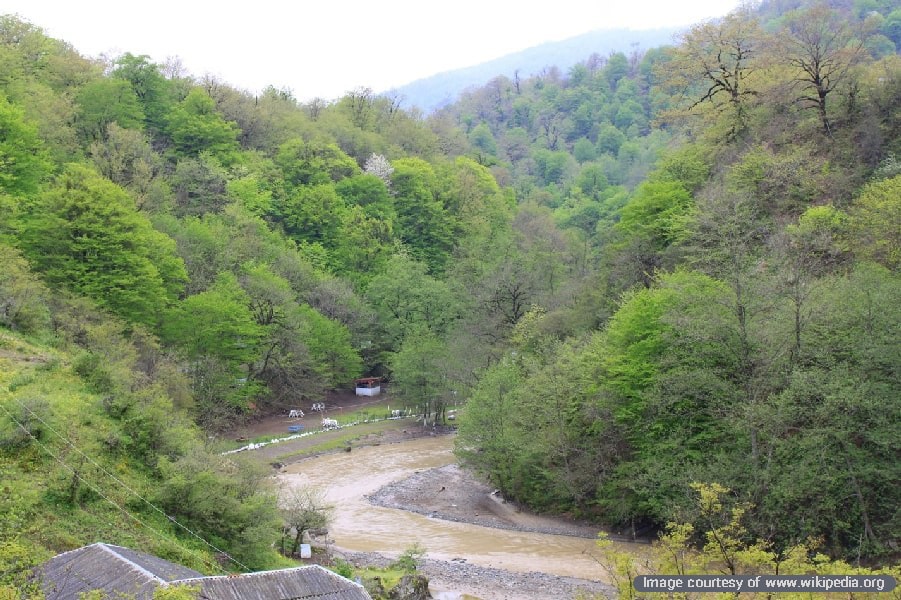
The Central Alborz mountain range is divided into two sections: the northern and southern slopes. These two sections are very diverse and rich in terms of plant and tree growth. Some of the flora species found in this geographical region are part of Iran’s biosphere reserves, which is why they need to be protected. Since the northern slopes of Alborz are exposed to heavy snowfall, rain, and humidity, most cities in this region are lush and green.
Here are the five biosphere reserves in the Alborz Mountains:
Golestan Biosphere Reserve: Located in Golestan Province, this reserve is known for its diverse plant and animal species, including various endemic species. It features mixed forests, temperate rainforests, and a range of ecosystems.
Alamut Biosphere Reserve: This area is known for its historical significance and rich biodiversity, including various wildlife species and endemic plants. The Alamut region is characterized by mountainous terrain and unique geological formations.
Hyrcanian Forest Biosphere Reserve: This reserve extends along the Caspian Sea and includes part of the Alborz Mountains. The Hyrcanian forests are known for their ancient trees and diverse flora and fauna.
Talesh Biosphere Reserve: Although primarily located in the Talesh Mountains, this reserve extends into parts of the Alborz range and is recognized for its biological diversity and cultural heritage.
Koohrang Biosphere Reserve: Located in the central Alborz region, this area is characterized by mountainous landscapes, unique wildlife, and diverse ecosystems.
The Hyrcanian forests are one of the well-known vegetation covers of this area, which unfortunately have been largely destroyed due to unsustainable development and improper actions in the industry and mining sectors. In these areas, herbaceous forms are prevalent compared to tree and shrub species. You can find a list of Hyrcanian vegetation in the article linked above.
Noteworthy flora that are more commonly seen on the dry slopes of Alborz include:
- Tusk (Populus)
- Baneh (Pistacia)
- Almond (Prunus dulcis)
- Hawthorn (Crataegus)
- Ares (Juniperus)
- Wild pear (Pyrus elaeagnifolia)
- Willow (Salix)
- Zervin (Salix subserrata)
- Wild Sumac (Rhus)
Wildlife of the Alborz Mountain Range
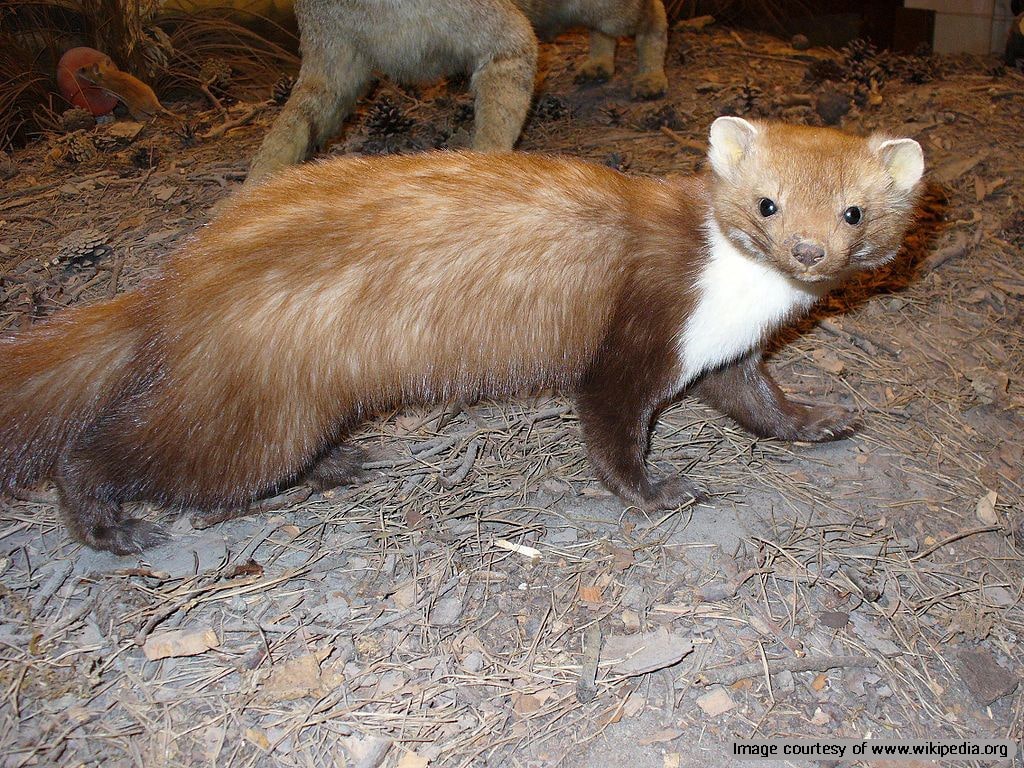
Due to the dense forests on the slopes of the Alborz mountain range, it is natural that multiple animal species inhabit this region. The specific topographic and ecological conditions of this area provide a favorable environment for mammals, birds, reptiles, and amphibians. Some of the animals that live in this region include:
Birds
More than 156 species of birds, such as the common kestrel, falcon, partridge, golden eagle, Caspian partridge, and common partridge, can be found in this area.
Mammals
In the Alborz mountains, 48 mammal species have been identified. Among the most important mammal species inhabiting Central Alborz are:
- Beech Marten
- Red Deer
- Wolf
- Brown Bear
- Mouflon and Sheep
- Wild Goat and Ibex
- Wild Cat
- Hedgehog
- Leopard
Amphibians and Reptiles

In these humid areas, 26 species of reptiles live, and currently, seven species of amphibians are also inhabitants of this mountain range. The reptiles of Central Alborz include:
- Alborz Viper (Vipera ursinii)
- Caucasian Viper (Gloydius intermedius)
- Saw-scaled Snake
Note: In the northern regions of the country, various aquatic species are found. These species of fish in the northern Alborz region are considered part of the Caspian Sea Marine Life, which we have described in this post..
Skiing, Hiking, and Climbing in the Alborz Mountains
Alborz Mountains are among the top destinations for skiing in the winter. The top 3 Ski resorts in Iran including Dizin, Darbandsar, and Shemshak are all located on the slopes of this mountain range. In addition, there is no shortage of scenic hiking routes and mountain climbing terrains, such as Tochal, Kolakchal, and many more.
The Alborz Mountains are one of the defining landmarks in Iran’s geography. They have served an important role in the development of civilization in northern Iran and as natural fortifications in historical battles. The mountain range is also home to indigenous species of flora and fauna that are part of Iran’s natural heritage. Mount Damavand, Iran’s highest peak, is a symbol of perseverance and strength and has been praised in Persian literature throughout the ages.
Destination Iran aims to present Iranian natural attractions to promote nature tourism. You can find an extensive list of such attractions in our Geography section.



